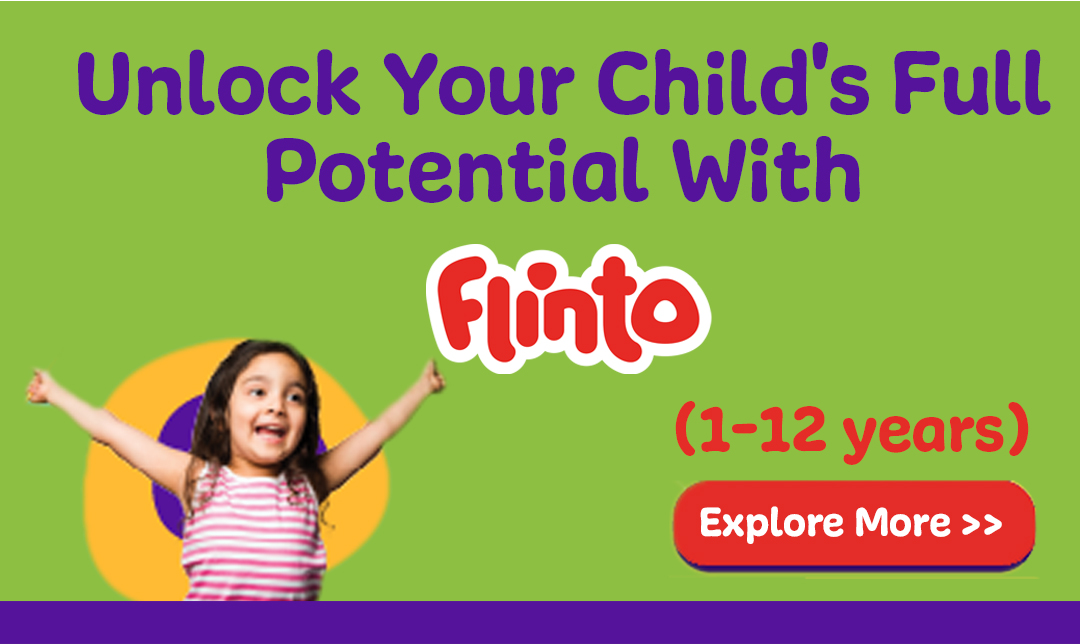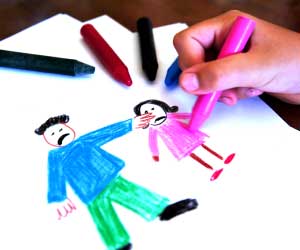 Now that you’re starting your own preschool, one of the most important things that you need to do is choose the right curriculum.
Now that you’re starting your own preschool, one of the most important things that you need to do is choose the right curriculum.
Choosing the right preschool curriculum takes a lot of time and you need to do a lot of research in terms of the types of curriculums.
But, don’t you worry, because we’ve listed down the top options for you to choose from.
I think you’ll agree when we say that preschools develop their curriculum by understanding various childhood approaches and developing an individualised one that follows the children’s interests and needs.
When it comes to preschool curriculum, a well-rounded curriculum that includes both academic and art-based activities, outdoor and indoor areas, a language-rich environment and inspirational educators will make all the difference.
RELATED: How To Start A Preschool In India – The Complete Guide
Here’s what you need to keep in mind while selecting the right preschool curriculum:
- Will this curriculum reflect the ideologies, values, and expectations of the preschool?
- Will this curriculum approach suit the learning styles of the children in your preschool?
- Will this curriculum approach involve predominantly physical or child-determined activities?
- Will this curriculum involve predominantly structured, facilitated or focused activities?
Well, it turns out that there are a lot of options, types, and approaches that have been formulated over the years, and selecting one particular ideology that is suitable for your preschool can get a bit overwhelming.
So, we have come up with a list of preschool curriculum that you can consider and select what’s most suitable for your preschool!
TYPES OF PRESCHOOL CURRICULUM & PROGRAMS:
1) THE FLINTOCLASS CURRICULUM
FlintoClass curriculum is an integrated and holistic preschool curriculum system.
This curriculum is a combination of the best elements taken from other major curriculum approaches like the John Dewey system, Waldorf Steiner system, PlayWay methodology, Multiple Intelligence, and many more.
It is uniquely designed to support a child’s social-emotional physical and cognitive development, through activities which develop a wide range of skills.
It is a well-designed system that will help the children to develop a strong learning foundation, life skills, and enable them to stay ahead of the fast-changing times.

2) TRADITIONAL APPROACH
Traditional day school approach is a basic preschool education method designed to prepare kids for school.
In this approach, classroom time is often devoted to developing skills in children, including measuring time, colour identification, problem-solving and other basic writing skills, reading skills and arithmetic skills.
Each and every day is well-structured, rarely varies, consistent and predictable. This approach is dedicated to ensuring that young children are ready for kindergarten and further studies.
Assisting the children to get used to the demands of the preschool is important when you opt to follow the traditional approach.
3) MONTESSORI APPROACH
This type of curriculum was developed by paediatrician/psychiatrist Maria Montessori in the slums of Roma in the early 1900s. A Montessori school helps children to gain independence, discipline and everyday life skills.
Dr. Montessori was conducting a research which focused on low-income children with learning disabilities to help them develop real-life skills. From this research, the Montessori preschool type/approach emerged.
Play is believed to be a child’s work, and children learn best at their own pace, with freedom of movement and activity within the limits set by their environment.
So, the idea of Montessori is that children are individual learners with teachers as their mentors that guide through this process of learning.
Play materials which are assigned to the children should be designed specifically in a way that the child can learn from during their playtime.
When you decide to choose this approach it is important to foster responsibilities to the children by asking them to take care of their own personal needs and belongings.
Many parents opt for Montessori because it also helps in developing leadership qualities and independence.
RELATED: Here’s a Quick Way to Setup Sand and Water Area in Your Preschool
4) WALDORF APPROACH
Waldorf is another approach with regard to the types of curriculum which was brought out by Rudolf Steiner, who was the founder of the first Waldorf School at the Waldorf Astoria cigarette factory in Stuttgart, Germany, in 1919.
According to him, a person is made up of three aspects – spirit, soul, and body. There are more than 750 programs designed around the world aimed at stimulating and developing these three elements in young preschool children by immersing them in nurturing surroundings.
Waldorf is a type of preschool curriculum that gives importance to getting children involved in practical activities.
Exposure to large amounts of television, video games, computers, and media is frowned upon as it is believed to limit a child’s development and get in the way of using all five senses to absorb and engage in daily life.
The goal of this system is to develop the child emotionally, physically and intellectually. This approach encourages the preschool children to be self-directed free-thinkers.
This method is quite different as it does not involve traditional academics and includes creative, hands-on-group learning with a focus on rhythmic repetition in a supportive environment.
5) REGGIO EMILIA APPROACH
The Reggio Emilia schools are based on the highly successful preschools developed by the townspeople of Reggio Emilia, Italy during the 1940’s. The Reggio Emilia approach is all project-based.
This approach believes that children from the child care must learn through hands-on experience using all their senses.
So a Reggio Emilia classroom focuses on using the four senses to learn. The teacher is more of a facilitator that guides the students and helps them in getting the answers to their questions.
Students learn to observe and make inquiries about the world around them and develop a drive for exploration and discovery.
Preschools that follow the Reggio Emilia style believe that children learn by using different channels to express their thoughts and feelings, such as drama, art, language, and music.
6) HIGH SCOPE
The High Scope approach was started by Dr. David Weikart, a Michigan educator, in 1970.
This preschool learning approach has a strong emphasis on learning through interaction with the environment, with a daily routine such as following a timetable, which is believed to be vital to a child’s growth.
It is based on the theory that children need active involvement with people, materials, ideas, and events. There is a focus on academics, based on child development research.
It is a good fit for any child who needs individual attention.
It is a curriculum of ‘shared control’ in which adults and children learn together and students are encouraged to make independent decisions about materials and activities.
Teachers use a method of scaffolding, supporting students at their current level and nudging them to extend and build skills.
This program deemphasizes social and emotional development in favour of academic skill development.
7) BANK STREET

Bank Street approach, run by Bank Street College of Education in New York City in the year 1916, is an approach wherein preschools focus on a child’s mental, social, emotional and physical growth.
The Bank Street approach teaches lessons through hands-on activities such as building blocks, puzzles, clay and dramatic play.
This approach believes that learning should encompass several subjects at once and occur in collaborative groups.
This curriculum is based on the idea that if children can learn about and study the human world, they can make sense of what they encounter.
In these programs, the child is an active learner and gains knowledge about the world through experience.
Students set the learning pace and the teachers serve as a guide.
8) PARENT CO-OPS
This is another preschool syllabus approach wherein parents are actively involved in their child’s education on a daily basis and work closely with the classroom teachers.
This approach allows parents and children to learn together and focus on teaching these preschoolers how to cooperate and resolve conflicts.
Parents who want to be a part of their child’s education will be given the opportunity to take up a significant role at the school and fulfil various duties like school upkeep, preparing snacks, assistance to the teacher in the classroom or share in the business operation of the school by serving on the school’s board of directors.
9) PLAY-BASED OR DEVELOPMENTALLY APPROPRIATE
Play-based or developmentally appropriate preschool is another type of preschool curriculum approach which is fairly common.
The primary principle is to promote participation in age-appropriate activities, such as unstructured hands-on play, group story time and themed activities.
Kids are encouraged to learn through play, though some preschools add more academic content in response to the demand of the parents.
Through play, children can develop social and cognitive skills, mature emotionally, and gain the self-confidence required to engage in new experiences and environments.
RELATED: Why is a play area important in a preschool?
10) LANGUAGE IMMERSION
In a language immersion preschool, all or most of the classes are conducted entirely in the new language.
Language immersion is best for children who are developing first language skills at a normal rate.
The teacher may demonstrate her meaning while she speaks, but rarely or never translates.
This method is more appropriate for young children than translation learning.
The focus on a new language develops the child’s language acquisition ability while providing fluency in the new language.
It may temporarily slow development of the first language, and so it’s inappropriate for children who are struggling in this area.
11) INTERNATIONAL SCHOOL
An international school is usually instituted by a foreign country in another country.
The language of the country of origin is typically used to conduct most or all of the classes.
These schools were often set up for the benefit of the children from the local area who wish to learn the language. An international school may teach other languages in addition to the main language.
These schools are best for children who are temporarily in a foreign country or for parents who want their children to learn the new language.
Conclusion:
You can consider all the above types of approaches for the curriculum and choose the playgroup syllabus approach that perfectly goes with everything you want the preschool to be.
Want the right curriculum for your preschool?
Then WhatsApp us at 7824820933 or Call at 044 40100456







Shannon Colclough
Thank you for this great list of curriculums.